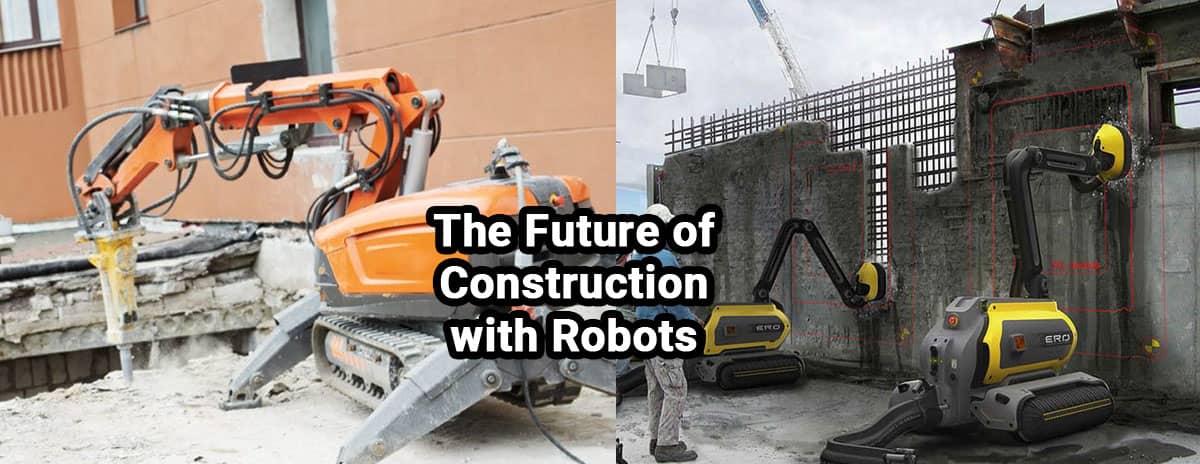The Future of Construction with Robots

Robots make everything better, don't they? Sure they do. The engineers and architects related to the construction industry think so as well. Construct-o-bots (or similar) have existed in science fiction forever. However, construction and architecture have been the least automated industries until recently. The nature of the work required to build a structure has always required a human mind to drive it, and the sheer number of steps to construct a simple thing and the varieties of tasks to be undertaken for a building translates into doing it manually. Over time, we have started to use machines for each step or task that can be automated or had to be mechanized, for example, concrete mixing, or pumping it far away. But to actually use Artificial Intelligence to make a simple wall has been impossible due to its intricacies. Well, up until now.
It is not like that construction work does not have scope for robotics and automation in it. On the contrary, there are plenty of jobs in a building site that are repetitive but not complex. Also, there are many occasions in a building site where humans would be in great danger. However manual labor has always been plentiful and heavy robotics hasn't been making much headway until the last decade.
But we have come far indeed. From using pullies and mixing drums, we are now using cranes and dozers operated by joysticks or even by remote. New technologies are opening up new doors in modern constructions. Only in the last decade, we have seen various prototypes like robots to carry stuff, drones to survey, autonomous vehicles for transport, 3D printing for modeling, exoskeletons to augment worker strength and much more. Recently shortages of manual labor and low unemployment in the country are driving modern constructors to consider more mechanized solutions than ever.
Many tasks in construction can be taken care of by robots, including bricklaying, painting, loading, carrying, and bulldozing. In fact, in the transportation field, there are already many AGV's (Automated Guided Vehicles) and AMR's (Autonomous Mobile Robots) hard at work, and we can expect to see their numbers multiply significantly in a short while. There are three key factors that are driving the need for more robots in the construction industry. One, that robots can protect or replace human workers in a hazardous work environment. Secondly, increased usage of robots will decrease workplace injuries drastically. Not to mention that a gap in the manpower left by labor shortage can be filled by work bots.
There are already some incredible examples of machines driven by set data taking over large portions in the building sites. Today let us look at a few of some awesome examples of using robots in construction.
Driverless Transporters
It has been a while since Volvo was working on its HX2, an AMR that can move heavy loads on preset paths without human input. The big truck doesn't even have a driver cabin at all. Marrying a digital logistics data-driven control tech to Volvo's "vision system" which lets it sense its environment, this truck runs on electricity to reduce pollution.
The Wallmaker
Hadrian X, an autonomous machine developed by the Aussie company Fastbrick Robotics, is making headlines in civil engineering by laying bricks. The automated bricklayer machine uses CAD-driven intelligent control to construct walls. It is capable of calculating how much material is needed to make a given wall and how the machine's bricklaying arm should move around, or should it reposition and how much. It can take into account environmental changes to be able to work in a hazardous environment, for example, in a storm. One of the greatest advantages of Hadrian X is, being a big robot, it can handle loads much heavier than what a human can. Therefore it can lay specially constructed bricks that are up to 12 times bigger or heavier than the standard.
Remote Operated Construction Drones
A bot that can fully construct a building is still in the future, but there are many that already can take care of support tasks or finishing work. For example, we already have app-controlled painting drones. These automated painters can download motion data from a cloud and upload reports back there.
Scaled Robotics from Italy has been tinkering on construction drones which can be remotely controlled by mobile devices. Adorably called 'Huskey', an unmanned ground vehicle, can roam around a building site capturing critical structural and survey data via multiple types of sensors mounted on its frame. It can then upload the information to a cloud for analysis with Building Infomation Modeling (BIM) software for the project.
Video Source: TechCrunch
